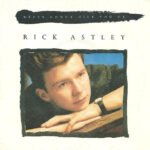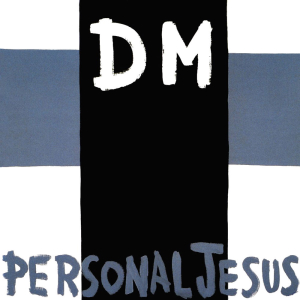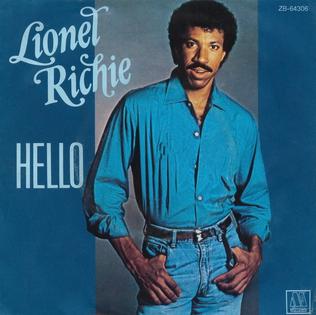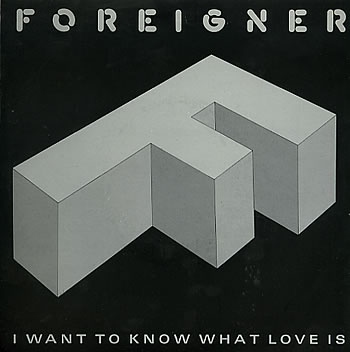 Rick Astley’s 1987 classic “Never Gonna Give You Up” is a song that transcends its era, standing as both an emblem of 1980s pop music and a cultural phenomenon that continues to captivate new generations. From its release on Astley’s debut album Whenever You Need Somebody, the track established him as a formidable voice in the pop world, combining infectious melodies, polished production, and a vocal delivery that exudes warmth, charm, and sincerity. While the song initially garnered attention for its radio-friendly hooks and danceable beat, its enduring legacy has only grown over the decades, fueled not only by nostalgia but also by the internet-driven phenomenon of “Rickrolling,” which has introduced the track to millions of younger listeners. “Never Gonna Give You Up” is far more than a meme; it is a masterclass in songwriting, production, and performance that demonstrates why Rick Astley became an international pop sensation.
Rick Astley’s 1987 classic “Never Gonna Give You Up” is a song that transcends its era, standing as both an emblem of 1980s pop music and a cultural phenomenon that continues to captivate new generations. From its release on Astley’s debut album Whenever You Need Somebody, the track established him as a formidable voice in the pop world, combining infectious melodies, polished production, and a vocal delivery that exudes warmth, charm, and sincerity. While the song initially garnered attention for its radio-friendly hooks and danceable beat, its enduring legacy has only grown over the decades, fueled not only by nostalgia but also by the internet-driven phenomenon of “Rickrolling,” which has introduced the track to millions of younger listeners. “Never Gonna Give You Up” is far more than a meme; it is a masterclass in songwriting, production, and performance that demonstrates why Rick Astley became an international pop sensation.
From the opening bars, “Never Gonna Give You Up” immediately establishes a sense of upbeat energy and forward momentum. The signature synth stabs, bright bassline, and precise drum programming epitomize the polished, danceable aesthetic of late-1980s pop. Producer Stock Aitken Waterman, known for their work with artists like Kylie Minogue and Bananarama, crafted a sound that was simultaneously slick and infectious, ensuring that the track would be instantly recognizable on radio and dance floors alike. The instrumentation perfectly complements Astley’s vocals, providing a driving rhythmic foundation while allowing his voice to remain the focal point. This careful balance of music and vocal performance is one reason the song continues to resonate decades after its release.
Rick Astley’s vocal performance on “Never Gonna Give You Up” is central to its charm and effectiveness. At the time of recording, Astley was just 21 years old, yet his deep, rich baritone conveys a sense of maturity and confidence that belies his youth. His phrasing is impeccable, effortlessly gliding over the track’s rhythmic accents while delivering each line with sincerity and emotional clarity. The warmth and earnestness of Astley’s delivery transform the song’s lyrics from a simple declaration of love into a statement imbued with genuine commitment and emotional resonance. Unlike many pop hits of the era that relied heavily on production to carry the song, Astley’s voice remains the heart of the track, anchoring it with authenticity and charm.
Lyrically, “Never Gonna Give You Up” is deceptively straightforward, yet it achieves universal appeal through its simplicity and clarity. The song is, at its core, a pledge of unwavering love and loyalty, with lines like “Never gonna give you up, never gonna let you down, never gonna run around and desert you” forming a mantra of devotion. These words resonate because of their directness, their emotional honesty, and the way they are delivered with conviction by Astley. The lyrics avoid overcomplication, relying instead on repetition and rhythm to embed themselves in the listener’s consciousness. In doing so, the song becomes both an intimate personal statement and a communal anthem, one that can be shared, celebrated, and embraced by listeners of all ages.
The structure of the song is a textbook example of effective pop songwriting. Opening with an immediately memorable hook, moving through verses that establish narrative and emotional context, and culminating in a soaring chorus, the track demonstrates a keen understanding of pacing and emotional arc. The pre-chorus builds tension and anticipation, creating a sense of momentum that is released in the climactic chorus. This careful structuring ensures that each section of the song serves a distinct purpose while maintaining a cohesive, engaging listening experience. Astley’s vocal delivery accentuates these transitions, with subtle inflections and dynamic shifts guiding the listener seamlessly from one section to the next.
The song’s instrumentation is meticulously arranged to enhance its accessibility and appeal. The synthesizers, programmed with bright, shimmering textures, provide both harmonic support and melodic interest, while the bassline drives the rhythm with a steady, danceable pulse. The percussion combines electronic drum machines with subtle acoustic elements, creating a rhythm that is precise yet lively. Additional touches, such as background vocal harmonies and occasional keyboard flourishes, add depth and richness without overwhelming the central performance. Each layer of the arrangement is carefully calibrated to complement Astley’s vocals, creating a polished, dynamic sound that remains engaging from the first listen to the hundredth.
One of the most remarkable aspects of “Never Gonna Give You Up” is its enduring cross-generational appeal. While initially a chart-topping hit in 1987, the song experienced a cultural resurgence in the 2000s with the advent of “Rickrolling,” an internet meme in which unsuspecting viewers are tricked into watching the song’s music video. This unexpected revival introduced the track to an entirely new audience, demonstrating the timelessness of its melody, production, and vocal performance. Despite its humorous context in modern internet culture, the song’s musical qualities remain undeniable, highlighting the strength of the songwriting and Astley’s performance. The juxtaposition of its 1980s production with contemporary meme culture underscores its versatility and the universality of its emotional message.
Rick Astley’s music video for “Never Gonna Give You Up” further cemented the song’s iconic status. Filmed in a style typical of 1980s pop videos, it features bright colors, playful choreography, and Astley’s charismatic presence. The visual presentation complements the song’s upbeat, affirming tone, adding a layer of performance and personality that enhances its appeal. The video’s enduring popularity, particularly in the context of “Rickrolling,” has contributed to the song’s continued relevance, allowing it to resonate with audiences in both humorous and earnest contexts. The combination of audio and visual elements demonstrates Astley’s ability to connect with audiences on multiple sensory levels, reinforcing the track’s cultural impact.
The song’s emotional resonance lies in its simplicity and sincerity. While the production and arrangement are polished and danceable, the core of the track is Astley’s heartfelt declaration of loyalty and love. This balance of polish and emotional authenticity is a hallmark of Stock Aitken Waterman’s production style when paired with a performer of Astley’s caliber. The track’s accessibility ensures that listeners can engage with it immediately, while the depth of vocal expression allows for repeated listening and sustained emotional connection. In essence, “Never Gonna Give You Up” achieves a rare combination of immediate appeal and enduring substance.
The chorus of “Never Gonna Give You Up” exemplifies the song’s melodic strength and memorability. Its simple yet compelling melodic contour, paired with rhythmically precise repetition of key phrases, creates a hook that is instantly recognizable and difficult to forget. Astley’s vocal inflections and dynamic choices imbue these repeated lines with energy and sincerity, transforming what could be a simple pop mantra into a compelling emotional statement. The interplay between chorus, verse, and pre-chorus is carefully orchestrated, ensuring that each section builds upon the last to create a satisfying musical journey that culminates in repeated, climactic affirmation of the song’s central message.
The broader cultural impact of “Never Gonna Give You Up” extends beyond its initial chart success. It reached number one in 25 countries, including the United States, the United Kingdom, and Australia, establishing Astley as a global star. The song’s combination of catchy hooks, danceable rhythm, and heartfelt lyrics allowed it to transcend demographic and geographic boundaries, becoming a staple of radio playlists, discotheques, and personal collections alike. Its influence can be traced in the work of subsequent pop artists, both in terms of vocal style and production techniques, demonstrating its lasting significance in the evolution of popular music.
Musically, the song exemplifies the hallmarks of late-1980s dance-pop while retaining qualities that render it timeless. The integration of electronic instrumentation with traditional pop songcraft creates a sound that is simultaneously of its moment and enduring. The track’s tempo, key, and harmonic choices are optimized for both radio and dance floor success, yet they remain pleasing and engaging decades later. The balance of rhythmic drive, melodic appeal, and lyrical clarity ensures that the song functions on multiple levels: as a danceable track, a romantic anthem, and a showcase of vocal prowess.
Rick Astley’s performance also reflects an understanding of audience connection and emotional expression. His deep baritone contrasts with the bright, energetic instrumentation, creating a compelling sonic balance that draws listeners in. The subtle variations in phrasing, emphasis, and vocal timbre convey nuance and sincerity, transforming straightforward lyrics into a layered emotional experience. This ability to communicate emotion effectively through vocal performance is a key reason for the song’s enduring appeal and its capacity to resonate with listeners of all ages and backgrounds.
The production techniques employed in “Never Gonna Give You Up” are emblematic of the Stock Aitken Waterman style: precise, polished, and rhythmically engaging, yet always attentive to the needs of the vocalist. The arrangement’s clarity ensures that each musical element supports the song’s narrative and emotional trajectory, allowing the listener to focus on the central message while enjoying the richness of the instrumentation. Synth textures, bass lines, and percussion interact in a way that feels both dynamic and cohesive, contributing to the song’s ability to sustain interest over repeated listens and diverse listening contexts.
The song’s legacy is further enhanced by its adaptability and cultural relevance. Beyond its initial success and subsequent internet fame, “Never Gonna Give You Up” has been covered, sampled, and referenced by artists across genres, demonstrating its versatility and continued resonance. Whether encountered as a nostalgic throwback, a dance floor staple, or a humorous meme, the track retains its musical integrity and emotional power. This adaptability underscores the strength of the songwriting, the excellence of Astley’s vocal performance, and the enduring appeal of its production.
At its heart, “Never Gonna Give You Up” is a song about commitment, love, and connection. Its lyrical simplicity belies the sophistication of its emotional communication; Astley’s delivery imbues each line with sincerity, transforming repeated phrases into heartfelt declarations. The universality of its themes, combined with the immediacy of its melodic appeal and the precision of its production, ensures that the song resonates across generations. It is a testament to the power of well-crafted pop music to convey complex emotion in an accessible, memorable form.
Live performances of “Never Gonna Give You Up” highlight Astley’s charisma and vocal skill, demonstrating that the song’s appeal extends beyond the studio recording. On stage, he is able to convey both energy and intimacy, engaging audiences with the song’s infectious rhythm while emphasizing the sincerity of its lyrics. The live arrangements often introduce subtle variations in instrumentation and vocal delivery, reinforcing the track’s dynamic range and keeping it fresh for repeated performance. These performances further cement the song’s status as a pop classic and showcase Astley’s enduring talent as a performer.
In conclusion, Rick Astley’s “Never Gonna Give You Up” is a landmark in pop music history, combining infectious melody, sophisticated production, and an emotionally resonant vocal performance. Its initial chart-topping success, enduring cultural relevance, and unexpected resurgence through internet culture all speak to the song’s versatility and timeless appeal. Through its combination of accessible lyrics, compelling musical arrangement, and heartfelt performance, the track has become both a nostalgic emblem of the 1980s and a continually rediscovered pop masterpiece. It demonstrates the power of pop music to unite, delight, and move listeners, proving that a well-crafted song, delivered with sincerity and skill, can resonate across decades. “Never Gonna Give You Up” is more than just a hit single; it is a testament to Rick Astley’s artistry, a celebration of emotional expression, and an enduring anthem of love, loyalty, and joy. Its place in musical history is secure, continuing to inspire, entertain, and captivate audiences worldwide, reminding listeners of the timeless power of a perfectly executed pop song.


